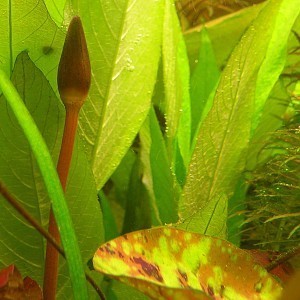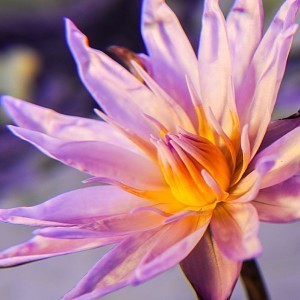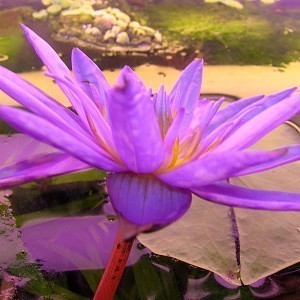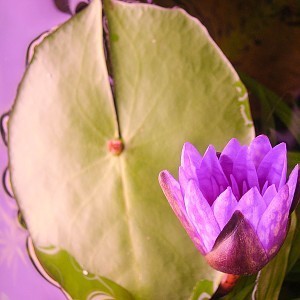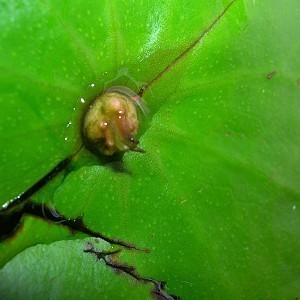Nymphaea Micrantha "gefleckt"
Under Construction.
General Description
- Common Names - Synonyms
- Tri-coloured lotus
- Order
- Nymphaeales
- Genus
- Nymphaea
- Family
- Nymphaeaceae
- Origin - Distribution
-
- West Africa
- Level of Difficulty
- Beginner / Easy
- Height
- 10-20cm (3.9-7.9 Inches) High
- Growth Rate
- Medium
- Light Requirements
- Medium Light (35-50 PAR)
- Co2 Requirements
- Recommended (Medium light)
- Temperature Tolerance
- 18 to 32 °C
- PH Range
- 6.5 to 8
- Plant Type
- Rosette
- Carbonate Hardness (dKH)
- 2 to 14 °dKH
- Can Be Grown Emmersed?
- Unknown
Nymphea micrantha ‘gefleckt’ (German for spotted) is a beautiful plant that offers large delicate submersed leaves with green red and black spots. The plant itself offers a great contrast and can be used as focal point.
The plant is easy to take care for and it can rely on the bulb for backup nutrition. Like most, it does better when the water column is fertilized. Intense light promotes red and black spots. The bulb can form a large root mass that is mainly superficial so take care when uprooting.
Unfortunately, like many plants from Nymphea this plant can get quite large and outgrow even 250L (62g) aquariums. The growth can be limited by frequent trimming and preventing the plant to reach surface for as long as possible. When leaves reach the surface, they are no longer spotted but the normal green color. Of interest in floating leaves is the formation of a new bulb at the tip of the petiole (Photo 7). The small new plant can be separated once the small leaves and roots start to form. Because of this behavior it is very easy to multiply this plant if you have enough space
If allowed to form floating leaves this plant can produce beautiful flowers even in aquariums which last one week or more (Photo 2-6).
The plant is easy to take care for and it can rely on the bulb for backup nutrition. Like most, it does better when the water column is fertilized. Intense light promotes red and black spots. The bulb can form a large root mass that is mainly superficial so take care when uprooting.
Unfortunately, like many plants from Nymphea this plant can get quite large and outgrow even 250L (62g) aquariums. The growth can be limited by frequent trimming and preventing the plant to reach surface for as long as possible. When leaves reach the surface, they are no longer spotted but the normal green color. Of interest in floating leaves is the formation of a new bulb at the tip of the petiole (Photo 7). The small new plant can be separated once the small leaves and roots start to form. Because of this behavior it is very easy to multiply this plant if you have enough space
If allowed to form floating leaves this plant can produce beautiful flowers even in aquariums which last one week or more (Photo 2-6).
References
Photo 1-7: N. micrantha. Source : Mihai Zamfir (Allwissend), 2016. All rights reserved. Used with permission.



